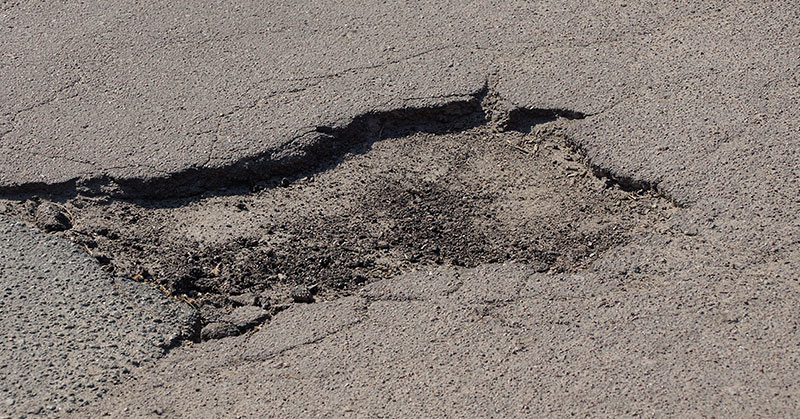Concrete may seem indestructible, but even this remarkably strong paving material can be damaged. And because your concrete surface is a major investment, it’s important to know what can cause degradation and how to avoid it. That’s why we’ve compiled the information in this article. Here are the most common causes for concrete damage:
- Weather – It may surprise you to learn that weather is the leading cause of concrete damage. This is especially true in winter, when the freeze-thaw cycle is repeated over a period of months. Water expands when it freezes. Over time the water that seeps into tiny cracks in a concrete surface and freezes then thaws, which can seriously compromise the integrity of the pavement.
- Chemicals – Concrete surfaces that are exposed to chemicals can easily become damaged. These include antifreeze, certain cleaning agents, fluids leaked from vehicles, and even natural solvents such as acid rain and carbonic acid.
- Ground underneath concrete – If the ground underneath your concrete surface is compromised in some way – by an increase in groundwater or movement of the soil due to some other cause – it can damage the concrete foundations and result in cracking, potholes and other damage.
- Structural stress – The older a concrete surface is, the more likely it is for the reinforcing steel to degrade and weaken. This is especially true for pavement that has to withstand constant vehicle traffic or heavy machinery, for example. An old parking garage, for instance, may begin to show signs of structural stress that can include cracking, spalling and scaling, among other things.
- Poor installation – If the concrete wasn’t installed properly to begin with, it won’t be nearly as durable as it would be if it were correctly installed. Improper installation could be due to a variety of situations – such as poorly mixed concrete, mistakes made by the paving contractor, inferior reinforcement material, etc.
Identifying Damaged Concrete
In most cases, damaged concrete will be obvious. You may see one or more of the following signs:
- Cracking
- Crumbling
- Discoloration
- Spalling (flaking)
- Scaling (wearing away of the mortar layer of the concrete)
Fortunately, there are several steps you can take to protect your concrete investment and ensure that it lasts for many years to come. For more information about identifying damaged concrete, and to find out effective ways to keep your paved surface in good condition, contact a local, reputable paving contractor and schedule an appointment.
